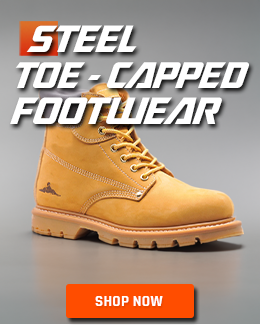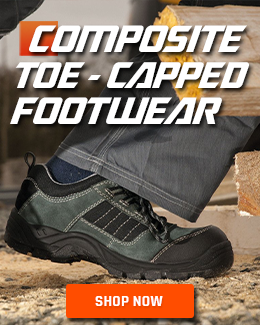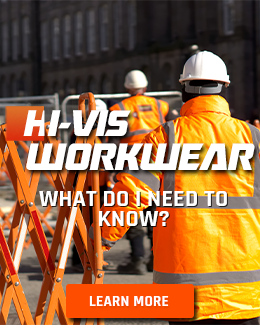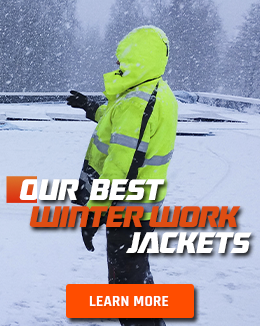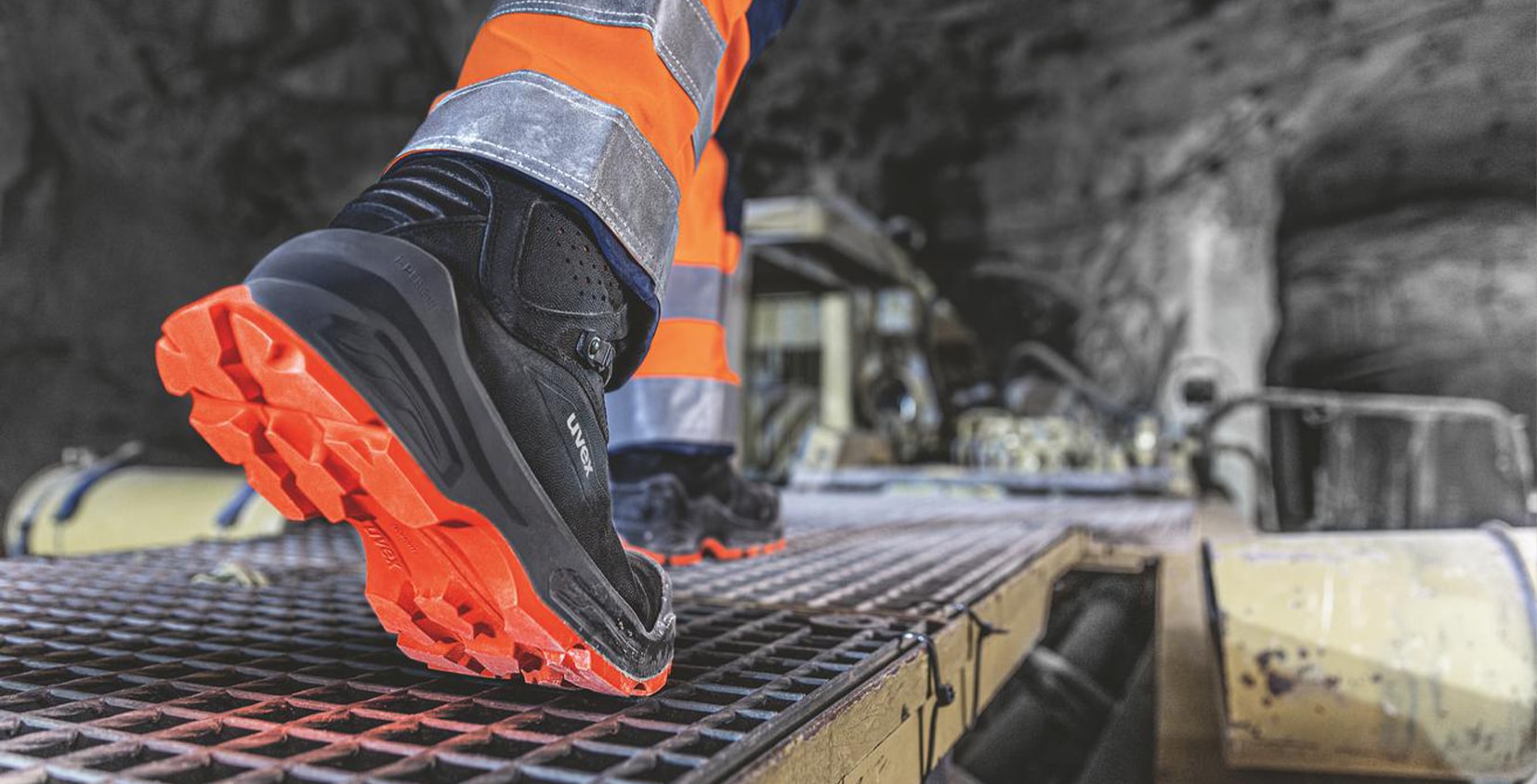| Your Guide to EN Standards for Footwear18 May 2023 | Amelia Protective gear is paramount in many industrial settings, to significantly reduce injuries within the workplace. Before safety shoes and boots can be sold, they are put through a series of risk assessments and classified under EN standards, with designated symbols such as SRB, WR and HRO to indicate the safety requirements they meet.
While it is essential to know what to look for when purchasing safety footwear for work, it's undeniable how confusing EN standards can be. For a better understanding of what each standard entails, we've put together this guide, breaking it down into digestible chunks so that you leave here with a better understanding - and a great, safe pair of shoes! What Does This Guide Cover?
Do I Need Safety Shoes?Many workplaces pose the threat of injuries. When risk assessments are being conducted to determine the safety of footwear, many potential hazards are often brought to the surface. Some of these include (but aren't limited):
When looking for the perfect safety footwear, it's imperative to know how these shoes can protect you. Some of the things to look out for is whether they shield you from:
EN ISO 20345: General Requirements for Safety FootwearEN ISO 20345 is the overarching standard at which the safety requirements needed for all work footwear are met. This standard is then divided into several classes, which are rated and determined from a series of risk assessments that are conducted for different parts of the shoe/boot. Below is a breakdown of the general classification system, categorised by symbols which explain the protective requirements needed to identify safe footwear. Standard Requirements
Additional Requirements
Whilst many pairs of safety footwear will indicate their levels of safety using these symbols, they will also be combined with other more specific EN standards - and therefore different symbols. How Do EN IS0 20345 Shoes Protect My Feet?These ergonomic features help to protect your feet from the following:
Suitable ApplicationsDue to their durable, ergonomic design, EN ISO 20345 footwear is suitable for the following applications:
EN 61340-4-3: Electrical Resistant FootwearElectrostatic discharge (ESD), or the release of static electricity, happens when two different conductive materials rub together. Whilst often harmless, this event can be hugely detrimental to the wellbeing and safety of operators, as well as to the actual electronics. The EN 61340-4-3 standard refers to footwear that provide effective protection for wearers and electronics against harmful exposure to static electricity. Dangers of Electrostatic Discharge (ESD)Whilst ESD can often be harmless, there are many risks that arise from the occurrence of ESD. These risks include:
Tests for Safe Footwear Tests for safe footwear are carried out to determine the level of protection users and electrical appliances have against electrostatic discharge. These include: Electrostatic conductive footwear
Electrostatic dissipative footwear
How Do EN 61340-4-3 Shoes Protect My Feet?ESD and anti-static shoes can help to protect users and their environment by:
Suitable Applications:
EN 13832-2: Chemical Resistant FootwearWhen working in environments such as laboratories, factories and warehouses, frequent contact with chemicals can result in splashes and spills. Protection from chemical risks such as splashes and degradation play a big role in your overall safety whilst at work, making EN 13832-2 footwear a necessary and essential investment. Chemical Burns Causes and SymptomsExposure to chemicals is common, and depending on the product/item, can be mostly harmless. Some common examples of day-to-day chemicals include:
However, contact with more corrosive chemicals can cause injuries, whether minor or life threatening. Symptoms of chemical burns usually resemble:
How Are Chemical Resistant Shoes Measured?EN 13832-2 is a standard that is applicable to footwear intended to be in close proximity/contact with chemicals for limited amounts of time (continuous contact for up to an hour). To ensure a safety shoe or boot can withstand contact with chemicals without the user coming into harm's way, they're measured by their resistance to damage and degradation from the following chemicals:
Only once footwear has been tested against these chemicals can they be certified as safe under the EN 13832-2 standard. How Does EN 13832-2 Footwear Protect My Feet?This standard of footwear helps to reduce the injuries to your feet at work from the likes of chemical spills and splashes, with a durable, ergonomic design that helps to prevent burns, pain and irritation to your feet. Suitable Applications
EN ISO 20347: Mechanical Resistant FootwearThe EN ISO 20347 standard specifies the need for safety occupational footwear in environments where there are mechanical risks. As many industries come into frequent contact with machinery and other mechanical appliances, the correct footwear can save you from an array of inconvenient injuries, such as impact, shock or compression. Safety Footwear RequirementsSimilarly to the EN ISO 20345 standard, EN ISO 20347 is categorised using symbols which outline the requirements that need to be met for a shoe or boot to be considered safe. Footwear must include: 0B:
01:
02:
03:
04:
05:
How Does EN ISO 20347 Footwear Protect My Feet?EN ISO 20347 safety boots and shoes are constructed with features that help to reduce injuries caused by job-related risk factors. These can include protection from:
Suitable Applications
EN ISO 13287: Slip Resistant FootwearWhen working in high-risk environments, such as in kitchens or in poor weather conditions, slippery and unsafe terrain is the norm. The EN ISO 13287 standard specifies the requirements that need to be met for occupational and general footwear in order to reduce the amount of injuries that can occur. Please note that this standard is not applicable to special purpose footwear containing spikes, metal studs etc. How Is Safety Footwear Classified Under EN ISO 13287?As with the other EN certifications, a series of tests are run to determine the level of slip resistance of a shoe. Footwear that's certified under EN ISO 13287 will be categorised under the following codes, which indicate which test has been conducted:
Please note that these test surfaces don't represent ALL occupational surfaces and therefore slip-resistance tests may need to be carried out in your specific work environment. What Does EN ISO 13287 Standard Footwear Protect Me From?Constructed with durable, anti-slip soles, this standard of footwear can protect users from:
Suitable Applications
Final ThoughtsIt may be a lot of information to take in, but we hope you leave here today with a better understanding of all of the different footwear EN standards and certifications so that you can get the best performance and protection out of your shoes! |
